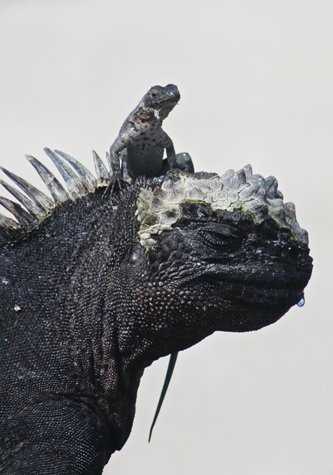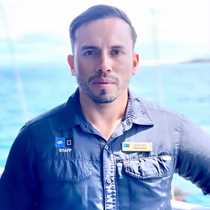Today, we landed on the youngest of the Galápagos Islands—Fernandina. We had a dry landing, and we were welcomed by several marine iguanas basking under the equatorial sun. These are some of the largest marine iguanas found in the Galápagos. After eating the green algae from the bottom of the ocean, they have to heat up their bodies in order to digest, so they are often found across the lava flows. Further into our trail, we spotted four endemic Fernandina racer snakes. It was the hatchling season for the baby marine iguanas, so snakes, great blue herons, and other predators were waiting to prey upon the hatchlings as they came out of their nests under the sand.
Small colonies of Galápagos flightless cormorants were also spotted along the coastline, as many Sally light foot crabs, and lava herons were feeding on some of the remnant organisms left behind by the low tide. This young island was the perfect example of a protected ecosystem, and it allows us to travel back in time to see the Galápagos before human impact.
During the afternoon, we traveled to Punta Vicente Roca, found on Isabela Island. This is one of the perfect places to snorkel with penguins, flightless cormorants, sea lions and pacific Green sea turtles. We also had the opportunity to go for a Zodiac ride along the coast of Isabela to spot some fur seals (which are truly sea lions) and a few Galápagos penguins, relaxing out of the water.
After this full day of activities, we returned to the National Geographic Endeavour for dinner. Tomorrow the adventure continues, as we continue our exploration of Darwin’s Archipelago.







